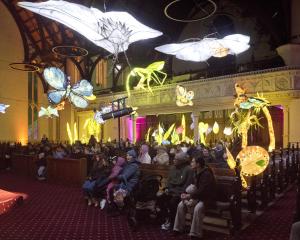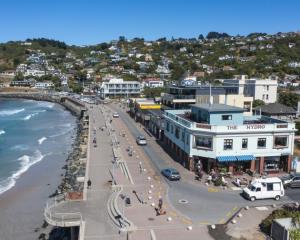The Methodist Mission, which plans to demolish the building to build a community support village on the site, argued strongly for recognition of the need for such a facility, and against opposition from heritage groups to the demolition.
A consent committee of Dunedin councillors Colin Weatherall, Andrew Noone and Richard Walls began a hearing, which finishes today, into the mission's application for a new $5.6 million social services complex on the site.
The New Zealand Historic Places Trust has opposed the development because of the plan to demolish the church building, which dates back to 1894.
The trust has called for the building to be saved and reused, but its stance on the development, and its submission, to be presented today, was regularly criticised by the mission's witnesses.
Counsel Phil Page, for the mission, said the application was not seeking consent to demolish the church.
"The church must be demolished, but your consent is not required for that."
The building had not been listed by the trust, nor had it been protected under the council's district plan.
"The simple fact is that this is not an application about historic heritage. That matter has already been decided by the district plan."
Mr Page said the consent process was about enabling the community to provide for their social, cultural and economic wellbeing.
"Everything else is a sideshow. I would invite you not to go there."
Methodist minister the Rev Donald Phillipps gave the hearing a history lesson on the building, and the Methodist ethos, which was that religious activities were carried out in buildings that were not built "to the glory of God".
Instead, Methodist buildings were essentially utilitarian, far removed from the tradition of Anglican parish churches.
Mission chief executive Laura Black said the church building spoke of Victorian values of "temperance, emotional repression, prudishness and authority".
"And it does this very well. Unfortunately, Victorian values are incompatible with those of modern Methodism, of the mission, of effective and meaningful social services."
Suggestions the church could be sold for use as a cafe or gallery ignored the socioeconomic status of the area, and its location.
Any potential owner wanting to buy and modify the church would have to pay an enormous cost to reach compliance standards for a building that was a liability, and would soon become unusable and unsaleable.
Ms Black said if the committee insisted on retaining the building, or its entrance in situ, the mission would have to reconsider the entire proposal.
Architect Ashley Muir said he had considered reuse of the building, but found it had few architectural expressions of a church, like stained-glass windows, a steeple or a bell tower.
The site was heavily compromised by the "charmless" building, which shaded the entire site at times, and would be a serious impediment to what was being planned there.
He said the NZHPT had originally suggested the entrance to the building be reused, but had made an "about face" to call for the retention of the whole building.
To satisfy that organisation's interests, he suggested the line of the foundation wall of the building be marked inside and outside the new buildings to mark its historical presence.
Answering questions from the committee, Mr Muir said the development would be "an immensely positive influence" on the future of South Dunedin.
Jeff Dickie launched into a wide-ranging argument that the council was not putting enough effort into looking after its heritage buildings, and was stopped by Cr Weatherall, who asked him to concentrate on the application.
Mr Dickie said Dunedin needed to look after what it had, and it was time to stop allowing the destruction of the city's heritage.
Cr Weatherall explained to the meeting the council had no power to stop the applicant demolishing the building.
"That's the dilemma we face."
Nigel Pitts, a church member, asked whether the focus should be on built heritage "and a dash of nostalgia", or people, and said it should be people every time.












